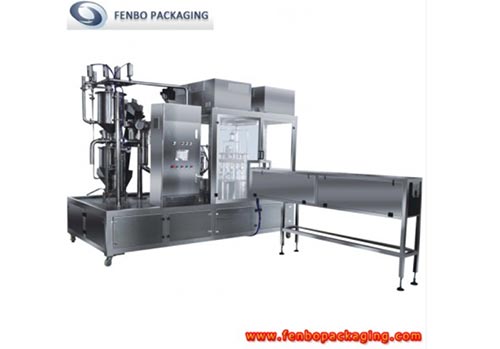How does an automatic filling machine work?
Aug 12,2024 | Views: 262
An automatic filling machine is a device used in various industries, such as food and beverage, pharmaceuticals, and cosmetics, to fill containers with liquids, powders, or other products. The machine automates the filling process, improving efficiency, accuracy, and consistency in production. Here’s how it typically works:
Positioning: The machine ensures that each container is correctly aligned and positioned under the filling nozzle.
Pump or Gravity Feed: The product is either pumped or gravity-fed into the filling nozzles.
Dispensing Mechanism: Depending on the product, the machine may use different dispensing mechanisms such as:
Volumetric Fillers: Dispenses a precise volume of product.
Piston Fillers: Uses a piston to push a specific amount of product into the container.
Time-Pressure Fillers: Uses time and pressure to control the amount of product dispensed.
Sensors: Sensors detect the presence of a container and ensure that the correct amount of product is dispensed.
Rejection System: If a container is not properly filled or capped, it may be automatically rejected from the production line.
Powder Filling Machines: Designed for powders like spices, flour, or pharmaceutical powders.
Viscous Filling Machines: Suitable for thick products like creams, gels, or sauces.
Accuracy: Ensures consistent fill levels and reduces product waste.
Versatility: Can be used for different types of products and container sizes.
Hygiene: Reduces the risk of contamination in food and pharmaceutical applications.
Automatic filling machines are integral to modern manufacturing, providing a seamless, automated solution for packaging products on a large scale.
Prev: What is the use of pouch filling machine?
Next: Why Are Stand Up Pouch Filling Machines Becoming Popular
1. Container Placement
Conveyor System: Containers (bottles, jars, tubes, etc.) are typically placed on a conveyor belt, which moves them to the filling station.Positioning: The machine ensures that each container is correctly aligned and positioned under the filling nozzle.
2. Product Supply
Hopper or Tank: The product to be filled is stored in a hopper or tank above the filling station. The tank is connected to the filling nozzles via pipes or hoses.Pump or Gravity Feed: The product is either pumped or gravity-fed into the filling nozzles.
3. Filling Process
Nozzles: The filling machine is equipped with one or more nozzles that dispense the product into the containers.Dispensing Mechanism: Depending on the product, the machine may use different dispensing mechanisms such as:
Volumetric Fillers: Dispenses a precise volume of product.
Piston Fillers: Uses a piston to push a specific amount of product into the container.
Time-Pressure Fillers: Uses time and pressure to control the amount of product dispensed.
Sensors: Sensors detect the presence of a container and ensure that the correct amount of product is dispensed.
4. Capping or Sealing
After filling, the containers move to the capping or sealing station, where lids or caps are automatically placed and secured.5. Quality Control
Inspection: Some machines are equipped with sensors or cameras to check the fill level and ensure quality.Rejection System: If a container is not properly filled or capped, it may be automatically rejected from the production line.
6. Output
Finished Products: The filled and sealed containers are then moved along the conveyor for packaging, labeling, or further processing.
Types of Automatic Filling Machines
Liquid Filling Machines: Used for beverages, chemicals, and other liquids.Powder Filling Machines: Designed for powders like spices, flour, or pharmaceutical powders.
Viscous Filling Machines: Suitable for thick products like creams, gels, or sauces.
Advantages of Automatic Filling Machines
Efficiency: Increases production speed and reduces manual labor.Accuracy: Ensures consistent fill levels and reduces product waste.
Versatility: Can be used for different types of products and container sizes.
Hygiene: Reduces the risk of contamination in food and pharmaceutical applications.
Automatic filling machines are integral to modern manufacturing, providing a seamless, automated solution for packaging products on a large scale.
Related Articles
-
 Spout Pouch Filling Machine | Reliable & Versatile Packaging
Spout Pouch Filling Machine | Reliable & Versatile Packaging
-
 Fenbo Packaging: China's Premier Doypack Machine Manufacturer for Optimal Packaging Solutions
Fenbo Packaging: China's Premier Doypack Machine Manufacturer for Optimal Packaging Solutions
-
 Doypack Machine Solutions: Top Chinese Manufacturer & Custom Packaging Tech | Fenbo Packaging
Doypack Machine Solutions: Top Chinese Manufacturer & Custom Packaging Tech | Fenbo Packaging
-
 Boost Packaging Efficiency with High-Performance Doypack Machines – Fenbo Packaging
Boost Packaging Efficiency with High-Performance Doypack Machines – Fenbo Packaging

